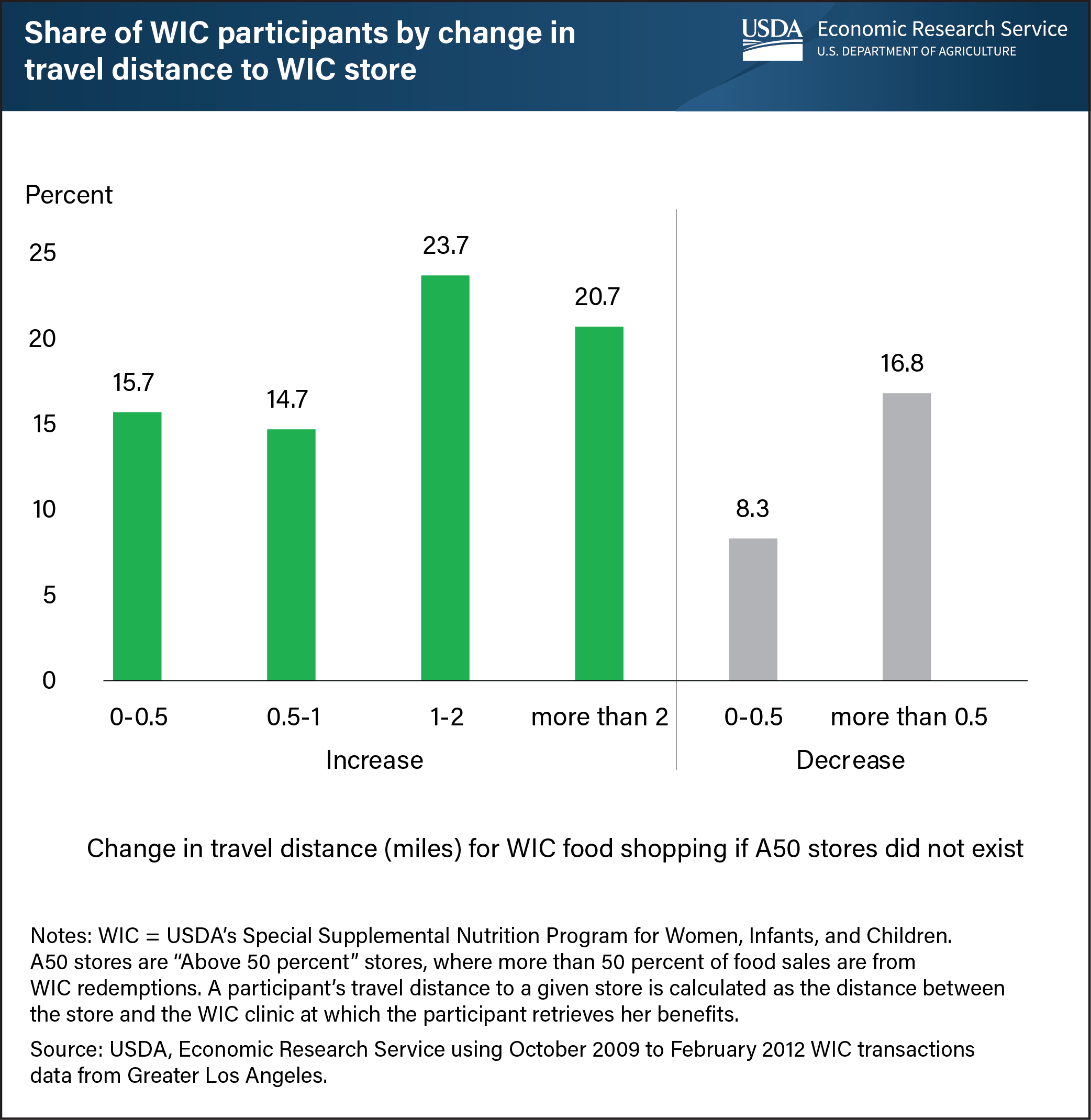Travel distance to WIC stores would increase for WIC participants in Greater Los Angeles if A50 stores did not exist
- by Patrick W. McLaughlin
- 2/3/2021

States have substantial latitude in choosing the types of retailers authorized to accept food benefits from USDA’s Special Supplemental Nutrition Program for Women, Infants, and Children (WIC). Almost all States authorize large retailers, while some authorize medium, small, and non-traditional food retailers, such as convenience stores and pharmacies. A handful of States, including California, authorize “above-50-percent” (A50) stores, which derive more than 50 percent of their food sales from WIC redemptions. A50 stores can offer advantages for WIC participants over traditional food retailers by making WIC-approved products easy to find and employing cashiers who are familiar with handling WIC transactions. ERS researchers and collaborators used WIC transaction data for the Greater Los Angeles area during 2009-2012 to address a hypothetical question: If California had not authorized A50 stores, what would have been participants’ travel distances to the nearest WIC-approved store? Without A50 stores in Greater Los Angeles, researchers estimated that 74.8 percent of WIC participants would have traveled farther to buy food at other stores, with 23.7 percent traveling an additional 1 to 2 miles and 20.7 percent traveling an additional 2 or more miles. A version of this chart appears in the Economic Research Service report, Cost Containment and Participant Access in USDA's Special Supplemental Nutrition Program for Women, Infants, and Children (WIC): Evidence from the Greater Los Angeles, CA, Area, February 2021.


